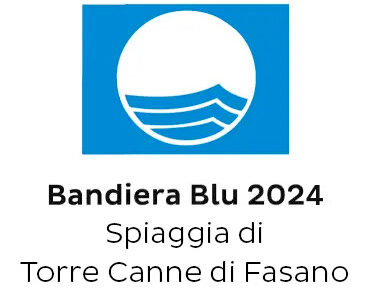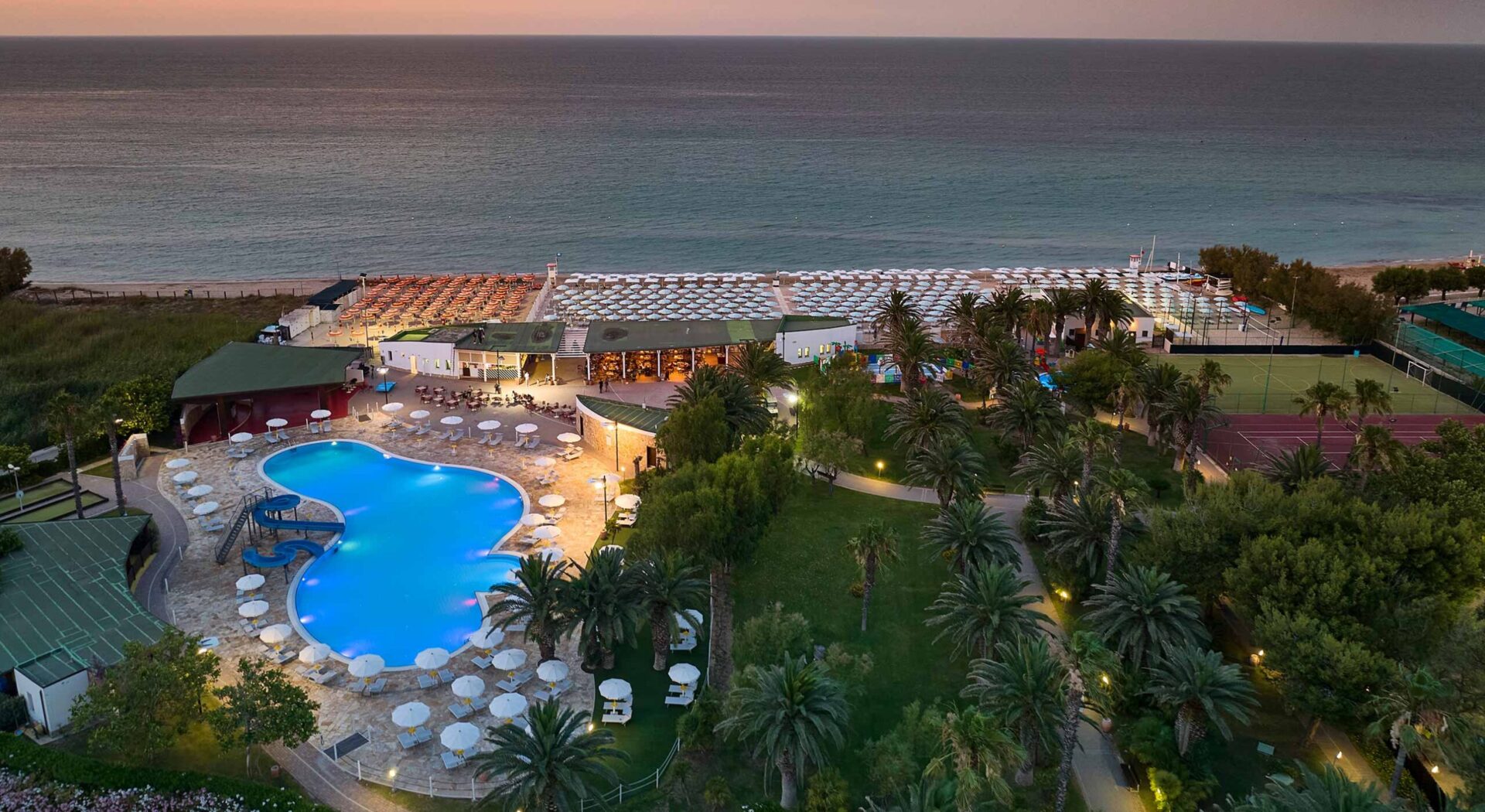Welcome to GranSerena Hotel, where nature’s beauty blends harmoniously with modern comfort to make your stay unforgettable.



Welcome to GranSerena Hotel, where nature’s beauty blends harmoniously with modern comfort to make your stay unforgettable.

Padel
Sport
Baby Kitchen
Beach
Pools
Restaurant and Bars
Attention to food intolerances
Rooms and Junior Suites
Accessibility for disabled guests
Entertainment
Clubs for children and teens
Playground
Excursions
Wellness Centre
Free Wi-Fi
Other Services
Distance: 77 km – Perched on a hilltop in southeastern Murgia, Martina Franca looks over the gorgeous Itria Valley. In addition to a rich landscape studded with typical trulli and masserie farmhouses, Martina Franca sprawls an exquisite vast karst territory. The historic centre’s Palazzo Ducale is home to the Festival della Valle d’Itria, a summer event that draws international artists and visitors. San Martino Cathedral and the Madonna del Carmine church are also worth visiting.
Distance: 77 km – Located in the Itria Valley, the splendid Locorotondo is regularly named one of Italy’s “Most Beautiful Villages”. Of particular note is the historic centre, an intimate, graceful ensemble of cummerse houses with distinct pointed roofs. Visit Palazzo Comunale, the former town hall that’s home to the municipality seat and the University.
Distance: 95 km – Cisternino rises from a limestone step of the undulating Southeastern Murgia, lapped by the breezes from the nearby Adriatic and surrounded by the lush countryside. The town’s typical white lime houses line alleys dotted with geraniums, arches, small loggias, stone friezes, and stairways that characterise the breathtaking historic centre.
Distance 100 km – Lecce lies in the heart of Salento between the Adriatic and Ionian Seas. It’s known for its Baroque splendour, evident in churches, palaces, and architectural details, which earned the city its nickname: “Florence of the South”. The rich, crumbly Lecce stone gives life to fine details, such as those that adorn the Basilica of Santa Croce and the Seminary building, or the magnificent Piazza del Duomo with the Cathedral of Maria Santissima Assunta. The Salento, nestled between the Adriatic and Ionian Seas, offers rocky, rugged coastlines on one side and vast sandy stretches on the other, converging in the enchanting Santa Maria di Leuca. The landscape is dotted with dry stone walls, olive trees, dolmens, and ancient farmhouses, each corner whispering tales of the past. Every year, events such as the Notte della Taranta celebrate the region’s musical heritage, blending the rhythms of the Salento pizzica with modern influences, creating an unforgettable fusion of tradition and contemporary energy.
Distance 15 km – The Fasano Zoosafari and Fasanolandia amusement park are a splendid excursion. Italy’s largest wildlife park is home to animal species from five continents that roam freely within the park. Observe, film, and photograph them in their habitat from your car as you drive through. You’ll find rides, shows, a disco, a theatre, and restaurants in the amusement park.
Distance: 27 km – Ostuni, the White City of Brindisi, is like a living nativity, its whitewashed walls glowing beneath the sky, surrounded by olive trees and dry stone walls, where the eye can travel all the way to the Mediterranean. Nestled between the Valle d’Itria and Alto Salento, it lies in a captivating region, renowned for its crystal-clear waters, high-quality services, awarded the Blue Flag and five sails by Legambiente, as well as its precious historical and cultural treasures.
Distance 31 km – The birthplace of Domenico Modugno, the quasi-triangular Polignano a Mare spans 63 square km and overlooks the Adriatic Sea. Believed to have once been the ancient Greek city of Neapolis, Polignano a Mare lies just over 30 km southeast of Bari, where the Arabs, Byzantines, Spaniards, and Normans have left indelible traces of their presence. Sites of note include the Norman Abbey of San Vito, the Roman Via Traiana connecting Rome to Brindisi, and the historic feudal period palaces of the Governor, the Feudal Lord, and “the clock” (the former town hall).
Distance 40 km – Discovered by speleologist Franco Anelli in 1938, the Castellana karst caves are a rare gem. The tourist route stretches for about 3 kilometres among evocatively named places, such as the Black Cave, Angel Corridor, Cave of the Crib, Precipice Cave, Crystal Pond, and White Cave.
Distance 55 km – Putignano is famous for its carnival and the workshops of the carpenters who make the parade “floats”. Visit Marchione Castle, the mother church of San Pietro and the 16th-century church of San Michele. Alberobello is 15 kilometres from Putignano on the Provincial Road, a town famous for its extraordinary, unique structures: the trulli, an exquisite UNESCO World Heritage Site.
Distance 131 km – One of the best-known localities of Salento, the town of Gallipoli is perched on a small island connected to the mainland by a long bridge. Once made of stone, the bridge represents an interesting and beautiful cultural and artistic heritage. In the ancient village, a maze of narrow streets and alleys, you’ll see civil and religious art and spectacular architecture. First and foremost, the beautiful mediaeval and Renaissance churches were later embellished with a Baroque flair that’s still evident today in the painted majolica adorning both the facades and floors, altars, wooden and paper-mâché statues, and several paintings, some of immense value.
THE PEARL OF THE ITRIA VALLEY
Distance: 77 km – Perched on a hilltop in southeastern Murgia, Martina Franca looks over the gorgeous Itria Valley. In addition to a rich landscape studded with typical trulli and masserie farmhouses, Martina Franca sprawls an exquisite vast karst territory. The historic centre’s Palazzo Ducale is home to the Festival della Valle d’Itria, a summer event that draws international artists and visitors. San Martino Cathedral and the Madonna del Carmine church are also worth visiting.
ONE OF THE “MOST BEAUTIFUL VILLAGES IN ITALY”
Distance: 77 km – Located in the Itria Valley, the splendid Locorotondo is regularly named one of Italy’s “Most Beautiful Villages”. Of particular note is the historic centre, an intimate, graceful ensemble of cummerse houses with distinct pointed roofs. Visit Palazzo Comunale, the former town hall that’s home to the municipality seat and the University.
THE TRADITIONAL WHITE HOUSES AND COLOURFUL GERANIUMS
Distance: 95 km – Cisternino rises from a limestone step of the undulating Southeastern Murgia, lapped by the breezes from the nearby Adriatic and surrounded by the lush countryside. The town’s typical white lime houses line alleys dotted with geraniums, arches, small loggias, stone friezes, and stairways that characterise the breathtaking historic centre.
PUGLIA’S BAROQUE CAPITAL
Distance 100 km – Lecce lies in the heart of Salento between the Adriatic and Ionian Seas. It’s known for its Baroque splendour, evident in churches, palaces, and architectural details, which earned the city its nickname: “Florence of the South”. The rich, crumbly Lecce stone gives life to fine details, such as those that adorn the Basilica of Santa Croce and the Seminary building, or the magnificent Piazza del Duomo with the Cathedral of Maria Santissima Assunta.
The Salento, nestled between the Adriatic and Ionian Seas, offers rocky, rugged coastlines on one side and vast sandy stretches on the other, converging in the enchanting Santa Maria di Leuca.
The landscape is dotted with dry stone walls, olive trees, dolmens, and ancient farmhouses, each corner whispering tales of the past. Every year, events such as the Notte della Taranta celebrate the region’s musical heritage, blending the rhythms of the Salento pizzica with modern influences, creating an unforgettable fusion of tradition and contemporary energy.
WILDLIFE AND AMUSEMENT PARKS
Distance 15 km – The Fasano Zoosafari and Fasanolandia amusement park are a splendid excursion. Italy’s largest wildlife park is home to animal species from five continents that roam freely within the park. Observe, film, and photograph them in their habitat from your car as you drive through. You’ll find rides, shows, a disco, a theatre, and restaurants in the amusement park.
THE WHITE CITY
Distance: 27 km – Ostuni, the White City of Brindisi, is like a living nativity, its whitewashed walls glowing beneath the sky, surrounded by olive trees and dry stone walls, where the eye can travel all the way to the Mediterranean. Nestled between the Valle d’Itria and Alto Salento, it lies in a captivating region, renowned for its crystal-clear waters, high-quality services, awarded the Blue Flag and five sails by Legambiente, as well as its precious historical and cultural treasures.
A JEWEL OVERLOOKING THE SEA
Distance 31 km – The birthplace of Domenico Modugno, the quasi-triangular Polignano a Mare spans 63 square km and overlooks the Adriatic Sea. Believed to have once been the ancient Greek city of Neapolis, Polignano a Mare lies just over 30 km southeast of Bari, where the Arabs, Byzantines, Spaniards, and Normans have left indelible traces of their presence. Sites of note include the Norman Abbey of San Vito, the Roman Via Traiana connecting Rome to Brindisi, and the historic feudal period palaces of the Governor, the Feudal Lord, and “the clock” (the former town hall).
STRIKING LIMESTONE CAVES
Distance 40 km – Discovered by speleologist Franco Anelli in 1938, the Castellana karst caves are a rare gem. The tourist route stretches for about 3 kilometres among evocatively named places, such as the Black Cave, Angel Corridor, Cave of the Crib, Precipice Cave, Crystal Pond, and White Cave.
FROM THE CHURCHES OF PUTIGNANO TO THE TRULLI OF ALBEROBELLO
Distance 55 km – Putignano is famous for its carnival and the workshops of the carpenters who make the parade “floats”. Visit Marchione Castle, the mother church of San Pietro and the 16th-century church of San Michele. Alberobello is 15 kilometres from Putignano on the Provincial Road, a town famous for its extraordinary, unique structures: the trulli, an exquisite UNESCO World Heritage Site.
THE GEM OF SALENTO
Distance 131 km – One of the best-known localities of Salento, the town of Gallipoli is perched on a small island connected to the mainland by a long bridge. Once made of stone, the bridge represents an interesting and beautiful cultural and artistic heritage. In the ancient village, a maze of narrow streets and alleys, you’ll see civil and religious art and spectacular architecture. First and foremost, the beautiful mediaeval and Renaissance churches were later embellished with a Baroque flair that’s still evident today in the painted majolica adorning both the facades and floors, altars, wooden and paper-mâché statues, and several paintings, some of immense value.
Enter the world of Bluserena. Sign up to receive email updates
on news, stories, and great holiday deals.
APPIA ANTICA 2 STREET, 72016 TORRE CANNE DI FASANO (BR)
Licence Number: IT074007A100028573
National Identification Code: IT074007A100028573
Motorways A14 Milan-Bari Sud or A1 to Naples/A16 to Cerignola/A14 to Bari Sud. From Bari Sud continue towards Brindisi on the SS 16 highway to the Torre Canne exit.
The station in Fasano is connected to the GranSerena Hotel by public transport or a transfer service on request.
Bari airport 77 km away and Brindisi airport 50 km away; transfer service available on request.